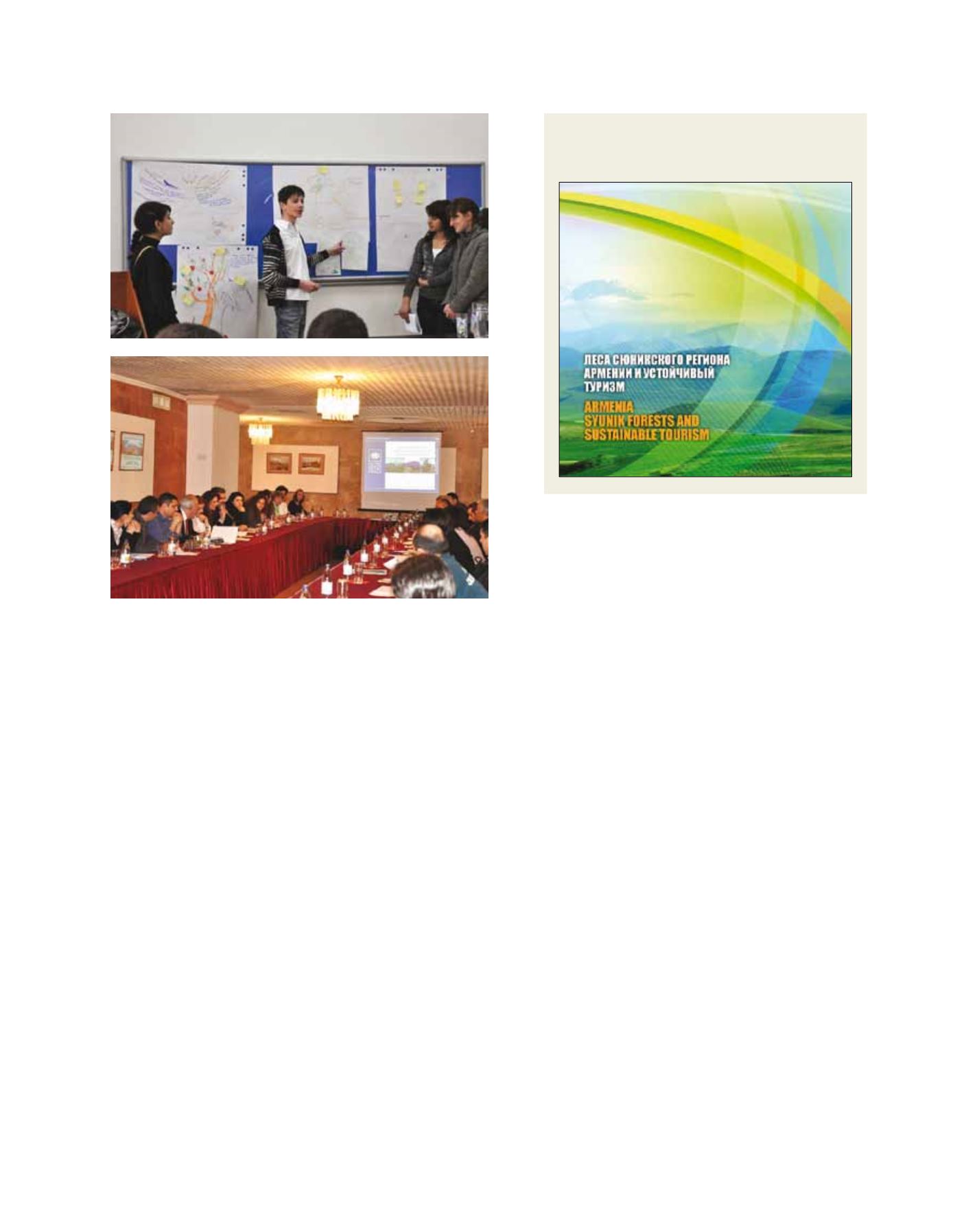

E
cosystems
[
] 202
provided by Russian colleagues and certain tools and
programmes were obtained free from the Internet
12
. A
weather research and forecasting model is being devel-
oped by ArmStateHydromet with the Academy of Science
of Armenia
9
. Nevertheless, building new and developing
existing human capacities remains a challenge, which
needs to be overcome.
Moving beyond a successful pilot
The project targeting the Syunik region has made great
advances and the information produced under the project
meets the interests and expectations of the stakeholders.
It has reflected several principles of the Global Framework
for Climate Services:
• Ensuring greater availability of, access to, and use of
climate services
• Building the capacity of climate-vulnerable developing
countries
• Establishing operational climate services as the core
element of the framework
• Affirming that climate information is primarily an
international public good provided by governments,
which will have a central role in its management
through the framework
• Committing to build the framework through user
provider partnerships that include all stakeholders.
The project experiences and lessons learned will not be
limited to the south-eastern mountainous forests of the
Syunik region. They will also be applied in forest and
protected area management in the central and northern
regions of Armenia and shared with the global commu-
nity through the Adaptation and Learning Mechanism
(www.adaptationlearning.net).
A specifically designed brochure on sustainable tourism, developed
and published under the project, was presented during a seminar
bringing together representatives from a range of governmental, non-
governmental, educational and tourism organizations
11
. Additionally,
representatives of local administrations and community leaders have
participated in trainings on fire prevention and suppression organized
by the project with other partners.
Challenges and requirements
Several challenges in the use of climate information have been revealed
during the implementation of project activities. A lack of corresponding
technical means, software and communication capabilities created diffi-
culties during the assessment of changing climate conditions at the local
scale, and there was a lack of appropriately trained staff at the hydromete-
orological service to carry out tasks such as producing tailored information
for specific user groups and applying downscaling techniques to outputs.
There are still significant uncertainties in the climate change assess-
ments. Seasonal prediction skills are low providing only a general
estimate of the possibility of forest fire without specifying the loca-
tion, time and intensity. There is also scope for improvement of the
seasonal outlooks, which serve as a basis for producing fire risk alerts.
Furthermore, the suggested FRI index has certain weaknesses. The
work to improve the index by including factors such as wind velocity
and duration of dry spells is on-going.
Some technical issues have been resolved through interaction
with experts from other countries, e.g. fire risk methodology was
Image: Adaptation to Climate Change Impacts in Mountain Forest Ecosystems of Armenia” UNDP/GEF Project
Seminars on (A) forest biodiversity and climate change issues for teachers
and pupils in the Syunik region, and (B) sustainable tourism in forest areas
under climate change conditions
A
B
Source: Armenian State Hydrometeorological and Monitoring Service
Armenia – Syunik Forests and Sustainable Tourism
– one of the brochures helping to disseminate
information about the project
















